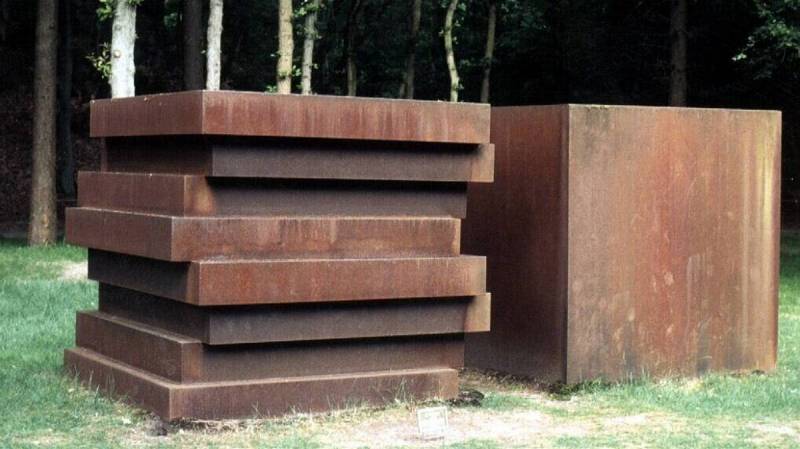Sculptural principles
In the 1950s and 60s, Carel Visser made robust iron sculptures in geometric shapes. In these entirely abstract works, sculptural principles such as mass and space, weight, balance and symmetry are the central themes.
Two possibilities
Cube and its piling up is a monumental example of this. The sculpture consists of two, almost man-sized, steel cubes. One is closed and unworked, the other, with the same initial size, is horizontally cut into eight equal layers, which are offset in different directions. Here, Visser juxtaposes a pure, untouched cube with a cube that has undergone a clear process. He gives two possibilities for the same volume.
Flat surface
Around 1970, Visser explored the cube form further. In the work Kubus en uitslag, from 1971, one cube consists of six loose, square metal plates, which are held together by strips of leather. The other lies flat on the ground, unfolded into the form of a cross. That which is essential to a cube, its volume, has disappeared; it is reduced to a flat surface.
